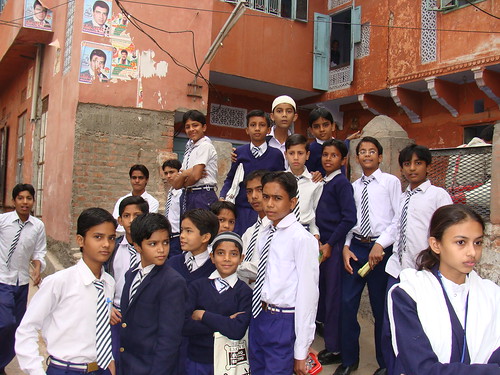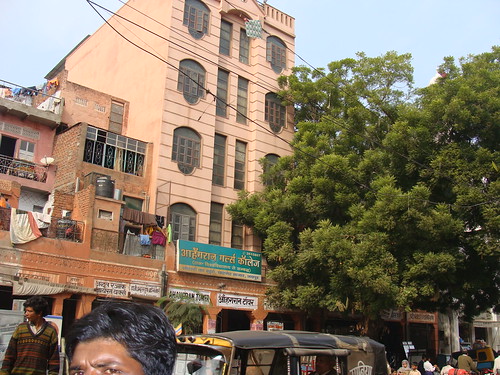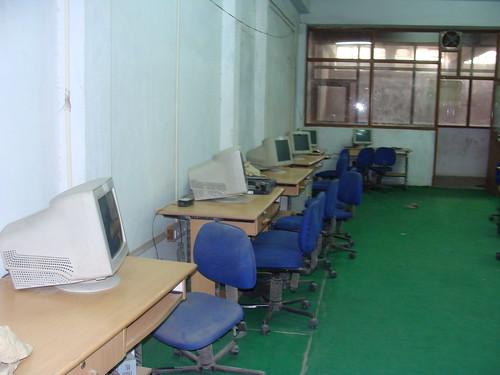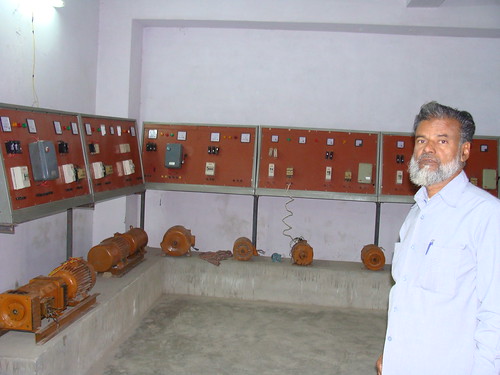Series on Jaipur – Part 3
By Mumtaz Alam Falahi, TwoCircles.net,
It will take Jaipur Muslims about a decade or more to see the full results of the educational awareness that has touched them and is now taking concrete shape. Different communities within the Muslim community in the city are doing tremendous job by setting up regular as well as vocational educational institutes. The Ahangar and Mansoori communities stand out from the rest in this field.
Abdul Lateef, who belongs to the Mansoori community, is just middle pass-out but he has already set up three industrial training institutes in different parts of the Pink City. There are about 200 students learning various trades in the three branches of his Maulana Azad Industrial Training Centre.

On what moved him to open these institutes, Abdul Lateef, who is also president, Dalit-Muslim Ekta Manch, and state secretary, All India Milli Council, says: “We wanted to give training to our youths in vocational and technical courses so that they could get job easily either in public or private sector. We opened them to improve the economic condition of Muslims.”
These institutes are imparting training in electrics, electronics, architecture, fitter, computer and teaching. The courses range from six months to two years.
But as generally the community is financially weak and in most of the cases it is the first generation that is getting higher education, he faced shortage of students qualified to get technical training.
“We could not get much success as our community is financially so poor that they could not bear the cost of education of their wards. Second, we could not get many students who had passed 10th or 12th class. Even if there are some matriculates or intermediates, their marks are lower than the minimum (50%) required for scholarships from the government,” says Abdul Lateef. There are about 15% Muslim students in these institutes.

Do you support financially poor but eligible Muslim students who want to take admission in your vocational training institutes? “Yes, the All India Milli Council bears 25% of the fees of such students. Besides, rather than taking fees in one installment, we take fees on monthly basis from the poor students. Moreover, about 2% of our strength gets free education,” says Abdul Lateef.
The government has started scholarships for minority students getting technical education. “But what is pity is that most of our students do not fulfill the basic criteria of minimum 50% marks. Because of poverty they do not get tuition so they have just passing marks. Very few could cross the minimum target and get the benefit. While for the same benefit, students of SC and ST categories need just passing marks,” says Abdul Lateef.

While comparing Muslims in Jaipur today with those 10 years ago, he says: “Indeed, there is now awareness among Muslims. They are now concerned about their future and development. Some individuals have come up to fight for the rights of the community. They are doing a lot of work for the welfare of the community.”
Like the Mansoori community, Ahangar community (15000) in Jaipur has done wonderful job in the field of education. They are running several schools both for boys and girls – from nursery to graduation.

They are running Ahangran Senior Secondary School and Ahangran Girls College in Ghat Gate area (where more than half of the members of Ahangran community lives) in Jaipur.
“Our educational institutes are run by the Ahangran community but they are open to the entire Muslim community as well as others. We give proper care to the education of girls,” says Nizamuddin, Secretary, Ahangran Girls College.

“We started as a primary school, then added middle and secondary. We felt that after secondary, girls discontinued education because parents did not want to send them out of the locality for education. So we started senior secondary. But then we felt the girls were not going out for further education, so we started the college six years ago,” informs Nizamuddin.
“In the beginning there were no girls for the college. So we met parents, and took dropout girls and fresh. Today we have 100 girls in the college. In the last four years 100 girls have graduated, 50 of them have moved ahead for further higher education,” says Nizamuddin who is a science graduate of 1975.

The college has only Arts faculty. Students have options to choose subjects like Urdu, Sociology, History and Political Science. About 50% of the girls are getting scholarships from HRD Ministry. In total the Ahangran community is helping about 400 children in these schools. They are studying free of cost.
“The great success of these schools is that the drop-out rate is now less than 5% among the community. The educational condition of the community has improved considerably. Earlier people would search for educated person who could read them their letters, today every house has children going to school,” says Nizamuddin.
The community is seriously working to start a technical training institute where male students could study job-oriented courses.
“This college building is not enough for technical education. We have bought two bigha of land in the city for setting up a technical institute for job-oriented courses,” says Nizamuddin.
The Ahangran Senior Secondary School is affiliated with the Board of Secondary Education, Rajasthan while Ahangran Girls College is affiliated with Rajasthan University in Jaipur.
